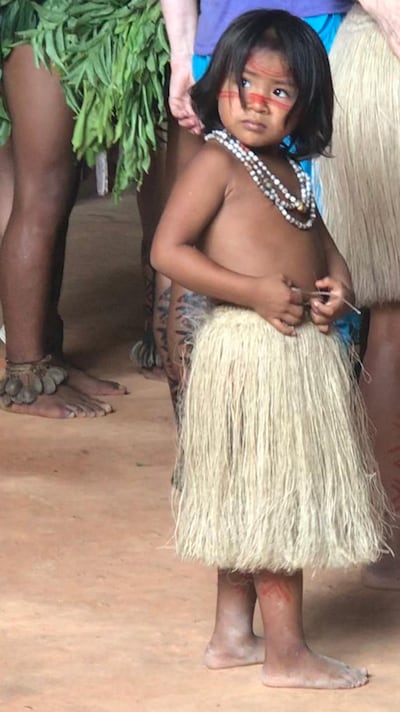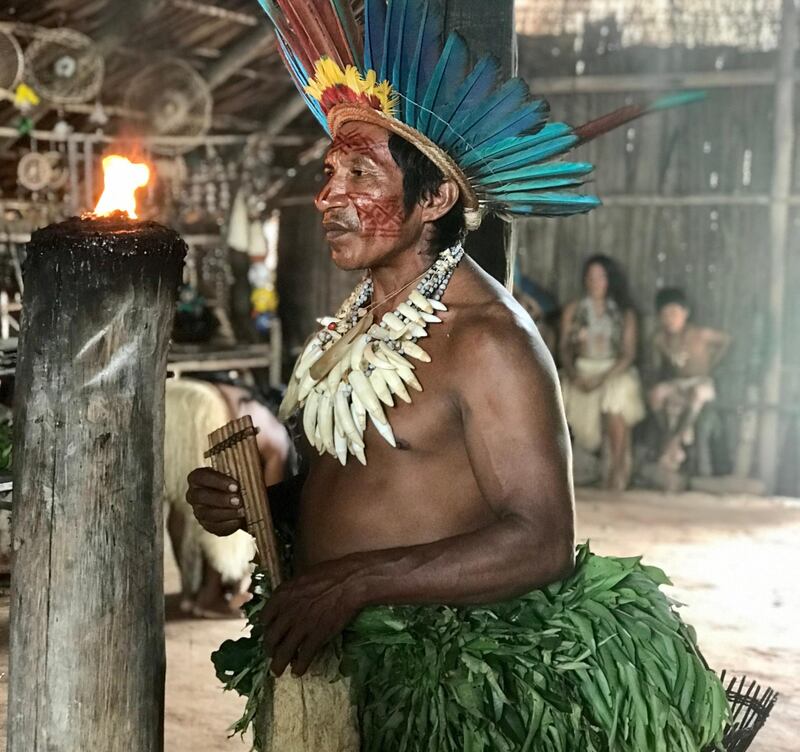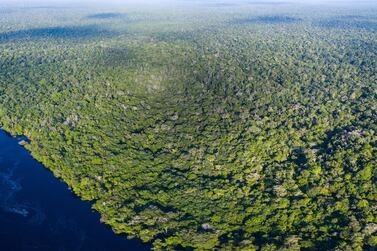The Amazon is burning. The lungs of the world are on fire and the flames have grown so big that the sky above Sao Paulo has turned as black as night. It is estimated that a significant percentage of the world's oxygen comes from the Amazon (although the exact figure is disputed) – a place that ranks firmly among my top travel destinations, after I visited last October.
Staying at a family-run lodge called Amazon Emotions, my days were spent waking up to the sound of howler monkeys, drinking freshly brewed kombucha and lounging in hammocks, absorbing the sheer brilliance of nature around me.
I climbed to the top of a sumaumeira tree and marvelled at the green canopy below. I spent the night camping in the jungle, admiring an inky starlit sky and fighting off an eerie shiver every time I heard the distinct sound of a jaguar call.
Even more ingrained in my memory is the time I spent with the Tatuyo tribe. They welcomed me warmly to their village on the banks of the Rio Negro and I got to experience a different kind of life. There, two hours by boat from the capital of the vast state of Amazonas, the Tatuyo live in harmony with nature. The river and the rainforest are the community's arteries. They fish, they hunt, they weave baskets out of tree bark and craft necklaces out of seeds.
They make and hang dream catchers, each one the shape of a spider web – the tribe considers the arthropod to be enchanted for its ability to catch things people cannot see.

Men, women and children congregate in a community hut where they dance to music dating back thousands of years. They sing songs telling the story of their tribe and move their bodies in praise of their god. Occasionally, they perform these customs in front of curious tourists, a means to make money while honouring the traditions of their ancestors, chief Pino explained during my visit.
These tribes are the gatekeepers of one of the world's most valuable eco resources. They live in harmony with the Amazon, never taking more than they need, wasting nothing and continuously replenishing its resources. These indigenous tribes, of which there are hundreds, have struggled for decades to protect the Amazon, fighting against deforestation and land development.
It is for these people that my heart truly breaks. The fires that burn today are largely the fault of official government policies that have emboldened loggers to start blazes to clear land for cattle. These policies show little regard for the Amazon's role as the world's lungs and measures were taken to help slow the fires only after an international outcry. But the actions of Brazilian authorities continue to pose a threat to the Amazonian tribes.
The size of the fires ravaging the Amazon are incomprehensible, with the blaze visible from space. As news coverage rolls into its third week, I continue to see footage of the fires on television and each time my thoughts drift to my time there.
I can easily recall the shrill cry of the jaguar cutting through the night air. Now, these big cats, along with about three million other species of plants and animals, are in grave danger. The same is true for the one million indigenous people who live there. Beyond that, however, as it continues to burn, there are implications for everyone.







